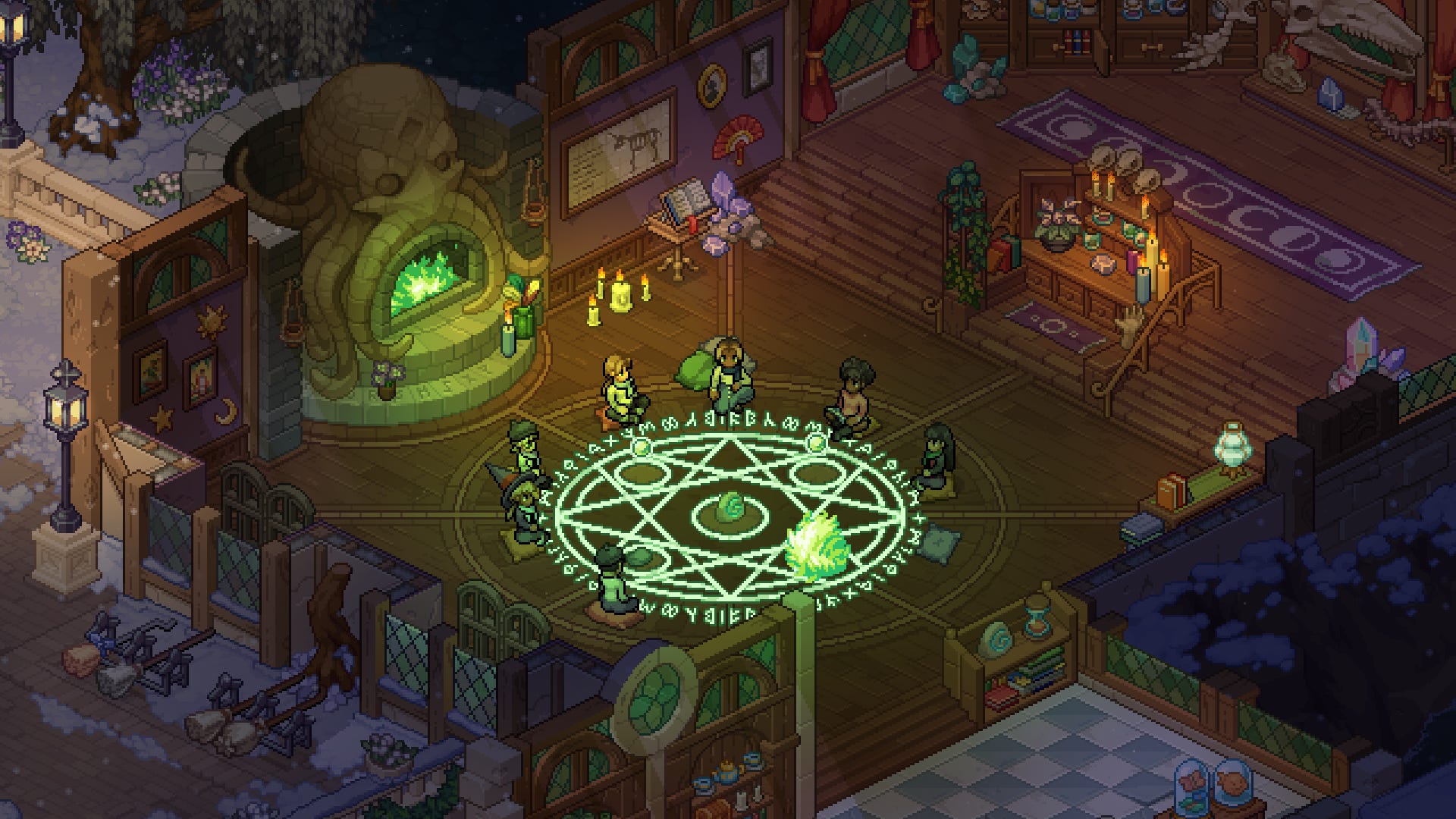www.scientificamerican.com
March 26, 202516 min readRebel Doctor Evangelina Rodrguez Improved Lives and Courted Controversy on her Return to the Dominican RepublicAndrea Lily Whear (composite); Nathaly Lerma (image)Andrea Evangelina Rodrguez Perozo, the Dominican Republics first female doctor, got a warm welcome on her return to the country from Paris in 1925. And she went straight to work, introducing her new ideas about health care for women and children. She set up a new medical practice and managed to get farmers to provide free milk for poor infants. But her proselytizing about contraception and her work with prostitutes made even her friends uncomfortable. Her ideas were ahead of her time, and those around her failed to keep up.LISTEN TO THE PODCASTOn supporting science journalismIf you're enjoying this article, consider supporting our award-winning journalism by subscribing. By purchasing a subscription you are helping to ensure the future of impactful stories about the discoveries and ideas shaping our world today.TRANSCRIPTLaura Gmez: Its the mid-1930s, in the Eastern Dominican Republic. A flock of children shriek and giggle as they chase each other around a small house. Inside, their mother is in labor. She lies on a bed, on the verge of delivering another baby.Crouched at the foot of the bed is a middle-aged woman with an air of quiet authority. Dr. Evangelina Rodrguez Perozo. She expertly coaches the mother through her contractions. There's a push, and suddenly, a newborn's first cry replaces the mother's moans.After attending to the mother and baby, Evangelina looks around for a small package she'd brought with her. It's missing.She finally finds it in the bathroom, where two older children are playing with some of its contents. They look like little rubber balloons."These arent playthings!" Evangelina scolds.She heads back into the bedroom and hands the package to the woman on the bed. She tells her:"You're still young and could have many more children. But you need to take care of yourself and the children you already have. They say every child is born with a loaf of bread under their arm, but we both know that's not true. These are condoms. Use these when you have sex with your husband to avoid getting pregnant again."The young woman looks at Evangelina, wide-eyed. No one has ever told her anything like this before.This is Lost Women of Science, and I'm your host, Laura Gmez. In this five-part series, we're examining the little-known life of Dr. Evangelina Rodrguez Perozo, the first woman doctor in the Dominican Republic.Elizabeth Manley: She worked with mothers and poor mothers, and she told them the things that no one else would tell them.Laura Gmez: She was an early advocate of family planning in her country; in ways that sometimes pitted her against the powers that be.Elizabeth Manley: Women were not being told not to get pregnant, right? They were being told to do what their husbands told them.Laura Gmez: But Evangelina wasn't going to stand for that.This story is serialized, so if you haven't heard Episodes 1 and 2, go back and listen to them first.And now, for Episode 3 of her story: The Rebel Doctor Returns.In 1925, Evangelina Rodrguez stepped off a steamship in her hometown of San Pedro de Macors. Shed just spent four years in Paris, soaking up modern ideas about how to build and care for a healthy society. She came back a transformed woman, light years away from the little girl selling gofio on the street.Now, wearing a fashionable dress and a feathered hat, she projected smart confidence. This version of Evangelinathe one thats the picture of propriety is the one that has endured until now. In the one surviving photograph of her from this time, Evangelina is young and put together, wearing earrings and a string of pearls, her curly hair parted in a stylish bob.As the Caribbean sun warmed her skin, Evangelinas head swam with new ideas and dreams for her people. She'd long imagined what her country could become, and her mind was looking straight towards the future. Here are historians, April Mayes and Mercedes Fernndez, who we heard from in previous episodes.April Mayes: She comes back with, Hey guys, we should, you know, build a maternity clinic and we should give milk to poor children.Mercedes Fernndez Asenjo (Voiceover): She immediately comes up with the idea that she wants to have her clinic, she wants to have this, she wants to have that. Weve got a dreamer.Laura Gmez: Under the U.S. occupation, there had been efforts to develop healthcare services and bring in doctors and nurses from the U.S., but these were mostly concentrated in urban centers. Smaller towns and rural areas remained neglected. Evangelina dreamed of introducing the ideas she learned in Paris about disease prevention, contraception, and maternal and infant care. She dreamed of bringing all women safety and support in navigating pregnancynot just wealthier city residents.And in her mind, the number one thing her hometown needed was a maternity clinic. The San Pedro City Council liked the idea. But unfortunately, that wasnt enough to make it happen.April Mayes: It's just the funding. I mean, by the time this comes up, San Pedro is kind of on the decline economically.Laura Gmez: The reality is, the San Pedro that Evangelina found at her return from Paris in 1925 was not the same city as the one she left.Sugar prices, which had soared during World War I due to global shortages, crashed back to their pre-war lows. And sugar-producing hubs like San Pedro fell on hard times. U.S. occupation ended in 1924, but it left the country mired in debt and dependent on an unstable global market. Plus, many of the American doctors and nurses who had come to the island during the occupation had left.So, when Evangelina returned to San Pedro, what she found was a healthcare system in decline. And when she petitioned the city for funding to open a maternity clinic, her request was denied.Evangelina got a position in a hospital with a small city stipend, but she wanted to start her own practice. And if she couldn't get the funds from the city council to open a clinic, she would do it on her own dime. So she moved into a wooden house in San Pedro, and opened her practice there.Evangelina's house was cozy and welcoming, with rocking chairs and a large china cabinet. Her framed diplomas hung on the walls, and she kept a miniature copy of a famous sculpture called The Thinker, by the French sculptor, Auguste Rodin. Outside, she had a garden full of plants. She used the largest room of her house for her medical consultations. It wasnt her dream clinic, but she loved what she did. Mercedes Fernndez.Mercedes Fernndez Asenjo (Voiceover): When she becomes a doctor, that's when she achieves happiness. When she realizes that she is useful to society, is when she adopts this role of mother of the patient.Laura Gmez: In addition to delivering babies, Evangelina launched many of the innovations she hoped to bring back from Paris. She taught informal classes on basic hygiene, and instructed midwives on ways to prevent infection during and after childbirth. Her home country had a long way to go in that regard. April Mayes again.April Mayes: You know, dirty instruments, not using sanitized instruments to cut umbilical cords, leaving women in labor too longLaura Gmez: Evangelina also educated expectant mothers on how to care for their newborns: She showed them how to sterilize bottles by soaking them in boiling water, and talked about the importance of washing their hands and breasts before breastfeeding. Things that may seem obvious to us today, but weren't for many people in the Dominican Republic at the time.Claudia Scharf (Voiceover): much less the initial care of the newborn, that attention to detail that you have to have afterward, the advice about how to start feedingLaura Gmez: This is Claudia Scharf, a Dominican pediatrician and medical professor who we heard from in the previous episodes.Claudia Scharf (Voiceover): ...hygiene care, the part that has to do with prevention. All of that was just beginning, so it was still in its infancy. So people didnt necessarily have that information.Laura Gmez: Evangelina knew that these seemingly simple actions had the power to save infant lives. And for her, the work was deeply personal. She likely saw many babies die for reasons that could have been prevented. And her own dear friend, Anacaona Moscoso, had died due to complications from childbirth years earlier. So Evangelina poured her whole self into her work. She traveled far and wide, sometimes for hours by foot, to deliver babies and visit new mothers with their infants.Then, a year later, after months of badgering authorities, Evangelina finally got the funds to open her dream maternity clinic. Located in a bright yellow house in the center of town, it was nicknamed La Casa Amarilla. All women were welcome there, regardless of income or class.For all her success, at times, Evangelina still faced tragedy. In 1929, she delivered a baby girl named Selisette. Selisette was the daughter of sugar workers from Puerto Rico. Doctors had warned Selisette's mother that she might not survive another pregnancy. Just as they had warned Anacaona.The memory of Anacaona must have been on Evangelina's mind when she attended to Selisette's mother and spent two days after the delivery desperately trying to save her. But despite her best efforts, the young woman died. As for Selisette's father...Mercedes Fernndez Asenjo (Voiceover): Selisette's father can't take care of her or doesn't want to take care of herit is not clear.Laura Gmez: Thats Mercedes Fernndez again. At this point, Evangelina, who was abandoned by both of her parents at birth, couldn't bear to leave an infant in these circumstances. She took in Selisette.Mercedes Fernndez Asenjo (Voiceover): Evangelina raises her as if she were her own daughter. So, even though she never married, I believe she was able to make this idea of motherhood come true with this girl, with Selisette. She loved her like her own daughter.Laura Gmez: Now, as Evangelina raised this little girl under her own roof, her work became especially personal. Like many of her patients, she too was a single mother raising a daughter in a struggling economy. Political instability loomed: after the collapse of sugar prices and years of U.S. military occupation, the promise that free trade and foreign investments would bring progress and development rang hollow.But Evangelina was all the more invested in her countrys future, which was now also her daughters future. And she had big plans.From another room in her wooden house in San Pedro, Evangelina launched her most ambitious initiative yet. It was inspired by the French program that distributed free milk for infants and had impressed her so much when she was in Paris. She called it La Gota de Leche, meaning Drop of Milk.Claudia Scharf (Voiceover): She organized what today we could call milk banks.Laura Gmez: Claudia Scharf again.Claudia Scharf (Voiceover): And she arranged for the delivery of large quantities of milk for mothers so that they would have something to feed their children and in some way help prevent malnutrition, or help with the treatment of those who were already malnourished.Laura Gmez: Once again, Evangelina had no funding or assistance from authorities. So she rolled up her sleeves and personally visited dairy farmers from the area to convince them to donate milk.Claudia Scharf (Voiceover): She talked with people she knew. Maybe she made relationships with ranchers, with people who had milk to give, farm owners, etcetera. And through her connections and acquaintances, she could go around gathering milk.Laura Gmez: Little Selisette witnessed much of this as she grew up in Evangelinas house, watching patientsand milk jugscome and go. The historian Perdita Huston once interviewed Selisette for a book about pioneers in womens health, published in the 1990s. Heres how Selisette recalled this time. Her words are read by a voice actor.Selisette Snchez (Voiceover): Our house was on Calle Independencia; it served also as her doctor's office. The largest room was used for consultations and there was another where the milk distribution was organized. Mother was afraid it would be given unpasteurized to the children if she didn't supervise its pasteurization right there, before distribution. The milk was donated by ranchers, but Mother paid neighborhood women to help her prepare and distribute the milk.Laura Gmez: Evangelinas insistence on pasteurization was life-saving. Pasteurization is the process of heating liquids or foods, in order to kill microbes that can cause spoilage and disease. It was discovered by French chemist Louis Pasteur, in the 1860s, and was initially used on wine and beer before being applied to raw milk. Pasteurizing milk killed microbes that were commonly associated with typhoid, diphtheria, and devastating intestinal diseases. By strictly supervising the pasteurization process, Evangelina ensured that no infants would die due to tainted milk supplies.Having a steady supply of milk was a godsend for poor families that struggled to feed their babies, and many people in San Pedro, especially mothers, were enormously grateful for Evangelina's work. Here are Claudia Scharf and April Mayes again.Claudia Scharf (Voiceover): Among mothers and women, she was really well-received, because they saw the positive effect. They saw the benefit in their children.April Mayes: I think she fulfilled a long-held desire on the part of a few people on the city council, not everybody, not all the time, but to really address poverty, and especially poverty in children.Laura Gmez: Evangelina had support, and she was doing work she loved and believed in passionately. Her friend Petronila Gmez, the founder of the feminist magazine Fmina that Evangelina wrote for during her time in Paris, published a glowing article about her work. Things seemed to be looking up.Buoyed by her success, Evangelina ventured into slightly more... controversial... territory. That same year, she and other women from San Pedro's Feminine League petitioned the San Pedro City Council to host a prophylaxis fair in the city's central park. And by prophylaxis, Evangelina meantApril Mayes: Birth control! I mean, well, condoms.Laura Gmez: April Mayes again.April Mayes: I was shocked when I'm, you know, reading the city council minutes and finding, So, we've been asked tothe ladies of so and so, they want to host this prophylaxis fair in the Central Park, and I'm like, this is fascinating that they would go to the city council and ask for supportand they get it!Laura Gmez: In the socially conservative, deeply Catholic Dominican society of the time, sex and contraception were largely taboo subjects. But there was one important reason why the city council of San Pedro might have been receptive to the idea of a prophylaxis fair. Thered been a rise in prostitution during the U.S. military occupation period. And that had led to a spike in venereal diseases like syphilis.April Mayes: Of course, no one believed that men had venereal disease. So it was only women who had it. And there was, you know, a desire to protect male soldiers from venereal disease. And so I think that allows for, for these ladies to come in with this idea pitched as This is for the good of public health and may even be for the good of protecting, you know, you men from the women who will infect you. And yeah, they go, they go forward with it. I, I couldn't even believe it.Laura Gmez: It must have been quite a sight: a group of well-coiffed ladies in long skirts and hats, selling trinkets and talking about using contraception and preventing venereal disease. It was all part of Evangelina's drive to improve Dominican society and usher her island into the modern era.But soon, Evangelina would learn that being a woman ahead of her time came with consequences...That's in Act 2.[Mid-roll]Laura Gmez: By 1929, Evangelina had earned a strong reputation as a family doctor with a special focus on expectant mothers. She saw patients both in her maternity clinic and in her home practice.But she wasnt just working with mothers and babies. She had a side hustle one that wasnt getting glowing reviews in papers and magazines.Elizabeth Manley: She spent time working with women in the sex trade, women who most medical professionals would not treat, would not attend to, would not look at. And even those that, you know, associated with them were perceived as kind of tainted by their presence.Laura Gmez: This is Elizabeth Manley, a professor of Caribbean history we heard from in Episode 2.Elizabeth Manley: She was not affected by those social mores and was very interested in, in helping women within the sex trade.Laura Gmez: If Evangelinas prophylaxis fair had already ruffled some feathers, now people were truly shocked. Sex workers were seen as enemies of society because they contributed to the spread of venereal disease. And Evangelina had once seen them that way too. But in Paris, shed had a change of heart. Shed come to see them as women with no better choices, and little to no access to medical care. Heres Mercedes Fernndez.Mercedes Fernndez Asenjo (Voiceover): So, when she comes back, she supports helping them, educating them, giving them ideas on how to take care of themselves, on how not to transmit these venereal diseases and, especially, these unwanted pregnancies, right?Laura Gmez: Evangelina began visiting prostitutes in brothels and offering them free medical care and condoms. Contraceptives, she had realized, were far more effective at stopping the spread of disease than moral hand-wringing and threats of punishment. But the backlash was fierce.Mercedes Fernndez Asenjo (Voiceover): This work that she insists on doing with prostitutes clashes with the society of the time. Many people went up against her, including the Catholic Church.Laura Gmez: Polite Dominican society was shocked. Catholic priests fiercely denounced Evangelina's efforts. But the more people balked at her work, the less Evangelina seemed to care about pleasing them. According to Francisco Comarazamy, one of Evangelina's longtime neighbors and friends who was also interviewed by historian Perdita Huston in the 90s, Evangelina's entire demeanor began to change. Here's how he described it. His words are read by a voice actor.Francisco Comarazamy (Voiceover): When she began to do social work, working with prostitutes and providing family planning for the poor, she became careless in her appearance. Her work with the needy convinced her that it was more important to be generous than to be a fancily dressed woman.Laura Gmez: Evangelina stayed the course, and never hid her work with prostitutes. In fact, she spoke of it openly. In a biography published in 1980, she's quoted as saying: "Yes, I go there. They are not bad women. They are just poor women who cannot find other work."And there was another controversial topic that Evangelina and the Catholic Church butted heads on: family planning. Condoms used to stop procreation, not just disease.In traditional Catholic doctrine, sex that's not for the purpose of procreation is sinful. Even between husband and wife, the use of any contraceptives was frowned upon and still is, officially.But ever since her return from France, Evangelina had begun counseling her patients to space out their pregnancies, and even handed out condoms. Here's what her adopted daughter Selisette remembers about this:Selisette Snchez (Voiceover): Whenever we visited the homes of families with many children, Evangelina talked about the benefits of family planning. She said that they shouldn't have more children than they could care for, or could feed. I would then see her give them a little package.Laura Gmez: Evangelina was one of the first proponents of family planning on her islandand in fact, in much of the world. In the United States, birth control activist Margaret Sanger opened her first family planning clinic in Brooklyn in 1916, but it was promptly shut down by authorities. In some parts of Europe, like France, modern family planning efforts didnt begin in earnest until the 1950s and 60s. It seems Evangelina had gotten a little too ahead of her time. Here's Mercedes Fernndez.Mercedes Fernndez Asenjo (Voiceover): Evangelina little by little starts losing notability within the society.Laura Gmez: Even Evangelina's friends, like feminist editor Petronila Gmez, who'd once been so supportive of her work and her career, now fell silent.Mercedes Fernndez Asenjo (Voiceover): None of that is going to appear in Fmina. None of it. So, that also shows you that Petronila knows what she can publish and what she can't publish.Laura Gmez: Evangelina's actions were controversial, and she was becoming increasingly so herself, as her efforts to empower women to take control of their bodies and pregnancies pitted her in direct conflict with the Catholic Church. She became the subject of hateful attacks.Mercedes Fernndez Asenjo (Voiceover): People attack her, calling her a butch because she never marries. And that was a normal attack at the time. When a woman didn't marry she was automatically butch or a lesbian. So, imagine a woman who gets a medical degree and also wants to help prostitutes, I mean, she was considered crazy at the time. It was like, Oh, yeah, she comes from Paris and she thinks she can do whatever she wants.Laura Gmez: Evangelina was taunted and mocked for her dark skin, her plain clothes, the men's Oxford shoes she chose to wear instead of women's heels. According to her biographer Antonio Zaglul, one day she broke down crying to a friend. She's quoted as saying:Because I don't have a husband, a man to protect me, they accuse me of being a lesbian. I get poison pen letters under my door. Even in the street when I pass by, people throw insults at me. For them I'm either kept by a man or not interested in men."No one could deny that the work Evangelina was doing with expectant mothers and poor children was important. But in the deeply Catholic, conservative Dominican society, her advanced ideas on family planning and keeping sex workers healthy were just too much.Mercedes Fernndez Asenjo (Voiceover): Deep down, what I see is that she is a very misunderstood woman. She is a woman who really, perhaps, was too far ahead of her time. I think if she had been born now or at the end of the 20th century, things would have been very, very different.Laura Gmez: And things for Evangelina were about to get much worse. It was one thing to anger local priests another thing entirely to come into the crosshairs of one of the most dangerous enemies she could have had in her country at the time the man who would soon seize power through a military coup: Rafael Leonidas Trujillo.That's next week.This episode of Lost Women of Science was produced by Lorena Galliot, with help from associate producer Natalia Snchez Loayza. Samia Bouzid is our senior producer, and our senior managing producer is Deborah Unger.David De Luca was our sound designer and engineer. Lizzie Younan composed all of our music. We had fact-checking help from Desire Ypez.Our co-executive producers are Amy Scharf and Katie Hafner. Thanks to Eowyn Burtner, our program manager, and Jeff DelViscio at our publishing partner, Scientific American. Our intern is Kimberly Mendez.Lost Women of Science is funded in part by the Alfred P. Sloan Foundation and the Anne Wojcicki Foundation. We're distributed by PRX.For show notes and an episode transcript, head to lostwomenofscience.orgwhere you can also support our work by hitting the donate button.Im your host, Laura Gmez. Thanks for listening, and until next week!Host Laura GmezProducer Lorena GalliotSenior Producer Samia BouzidGuests:April MayesApril Mayes is Associate Dean and Professor of Afro-Latin American history, Pomona College.Mercedes Fernndez AsenjoMercedes Fernndez Asenjo, PhD, is a foreign language educator at The Catholic University of America.Claudia ScharfClaudia Scharf is Director of the School of Medicine, Universidad Nacional Pedro Henrquez Urea.Elizabeth ManleyElizabeth Manley is Chair of the Department of History and a professor of Caribbean history, Xavier University of Louisiana.Further Reading:Despreciada en la vida y olvidada en la muerte: Biografa de Evangelina Rodrguez, la primera mdica dominicana. Antonio Zaglul. Editora Taller, 1980Motherhood by Choice: Pioneers in Womens Health and Family Planning. Perdita Huston. The Feminist Press at The City University of New York, 1992Granos de polen. Evangelina Rodrguez. 1915The Mulatto Republic: Class, Race, and Dominican National Identity. April J. Mayes. University Press of Florida, 2014












